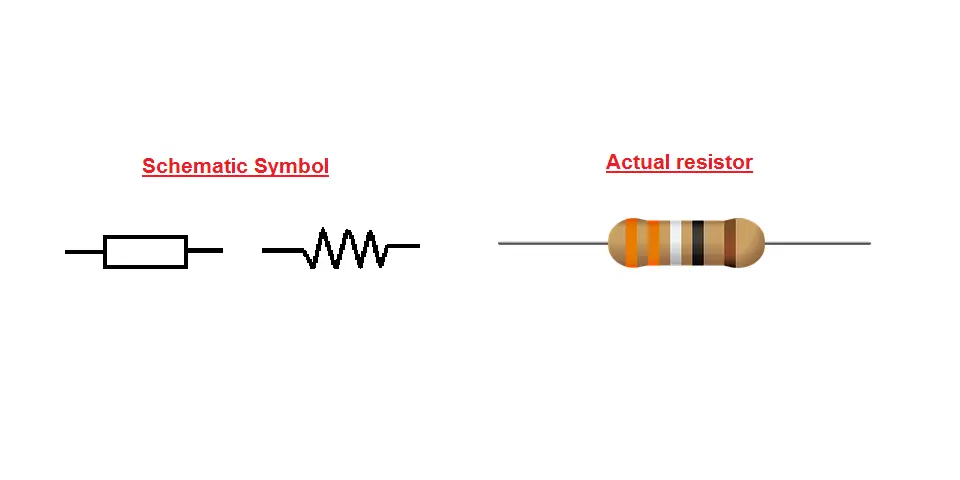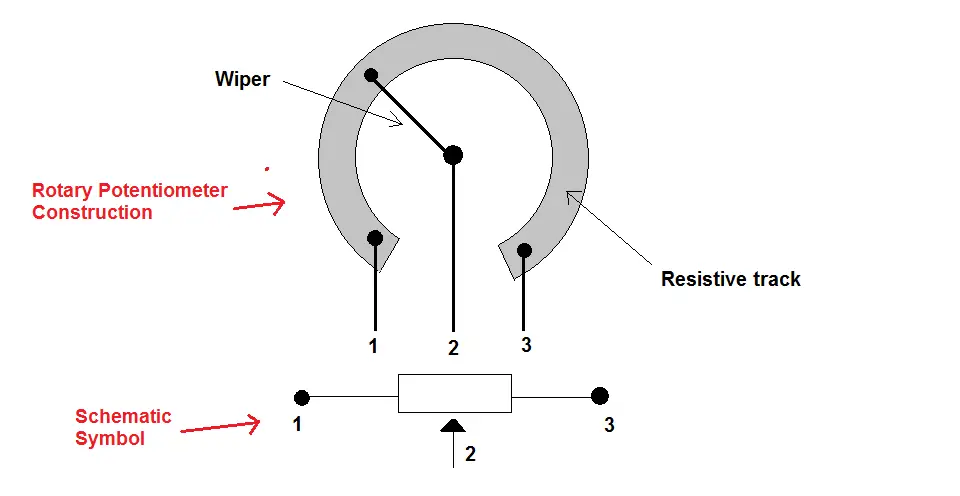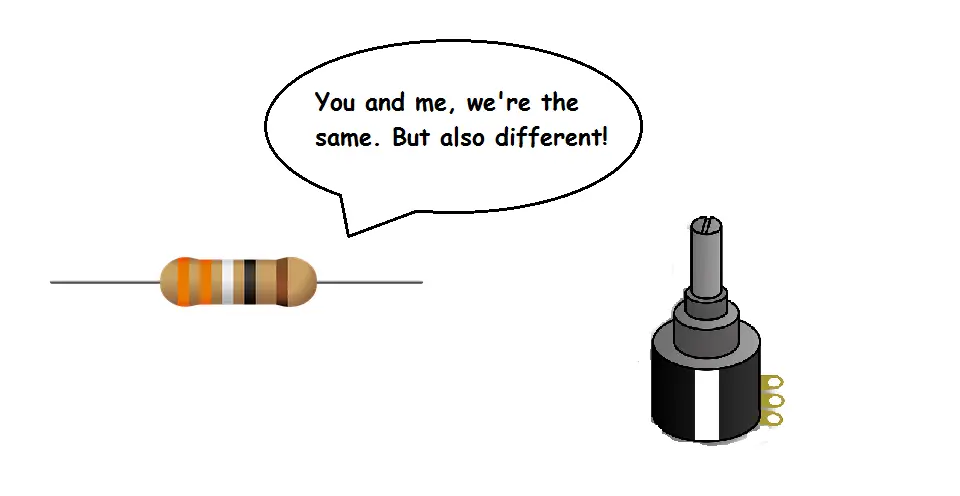Resistors, Rheostats, and Potentiometers are terms that are used commonly in the electrical and electronic world. They are components used commonly in electrical/electronic applications. They are quite similar as they each deal with resistance. However, each has their own unique abilities. But, sometimes people can confuse one for the other due to the fact that each of these components deals with resistance. So what exactly is the difference between a resistor, rheostat and potentiometer? This article shall take a closer look at the key differences between these components.
Resistors, Rheostats, and Potentiometers
Before we can take a look at the differences between these components, it will help to first learn a bit about them individually. So let’s take a quick look.
What is a resistor?
A resistor is a crucial component used in almost every (if not all) electrical/electronic circuits. It is a two terminal passive component which has the main purpose of limiting the current flow. It does so by providing a known resistance. Higher resistances allow less current to flow, while lower resistances allow more current to flow. The resistor’s resistance comes down to the materials used as well as how it is constructed. However, these materials need to be able to allow current pass while still providing a resistance.
While the resistor has the main function of limiting current, it has many other uses which include voltage division, heat generation, matching and loading circuits, gain control, as well as setting time constants.

What is a rheostat?
Rheostats are components which have the ability to vary their resistance. By varying the resistance, rheostats can control the flow of current. Because of this unique ability rheostats are used in applications that include altering generator characteristics, light dimming, and motor speed control.
Resistance of resistors, and rheostats come down to certain factors which are their length, cross-sectional area and material. The cross-sectional area, and material of a rheostat remain constant. So, to be able to vary its resistance, rheostats vary their physical length.
A rheostat has the capability of varying its resistance because it has the ability to vary its length. While its cross-sectional area and what it’s made of remain constant, its length can be altered.

All rheostats come with three terminals. Two of the three terminals are fixed (in the above diagram its terminal 1 and 3). The middle terminal (terminal 2), is not fixed and can be moved backward and forward. By moving this terminal back and forth, we are changing its position on the resistive track (which is often a coil of wire as seen above) thus altering the rheostat’s length (and resistance in the process).
While it has three terminals, only two terminals get connected to the circuit. This includes one of the fixed terminals, and the terminal that moves.
What is a potentiometer?
Finally, we have the Potentiometer. The potentiometer is very similar to the rheostat. It too has three terminals and the ability to vary resistance. However, the potentiometer has an additional capability which is to vary the voltage and act as a voltage divider.
The most commonly used potentiometer is the Rotary Potentiometer. This type of potentiometer has a knob which the user can rotate backwards and forwards to alter its characteristics. This knob is connected to a semi-circular resistive track via a contact. As the contact moves along the resistive track, the voltage is obtained between one fixed terminal and the middle sliding terminal.

Potentiometers also have three terminals as seen above. All three terminals are utilised to be able to use the potentiometer as a voltage divider. However, if you just want to vary resistance, only two of the end terminals are connected.
What is the difference between a resistor and rheostat?
The main difference between a resistor and rheostat is that the resistance of a resistor is fixed, whereas the resistance of rheostat isn’t. The resistance of the rheostat can be varied by moving its middle terminal which changes the physical length of the rheostat, and thus changes its overall resistance. Resistors come with fixed values of resistance due to the fact that their length, cross-sectional area and materials used are all fixed and cannot be altered.
What is the difference between a resistor and potentiometer?
The main difference between a resistor and potentiometer is that a resistor has a fixed resistance, while a potentiometer can vary its resistance. Just like the rheostat, the potentiometer has the ability to alter its physical length which results in its ability to alter its overall resistance as well.
What is the difference between a rheostat and potentiometer?
The main difference between a rheostat and potentiometer is that the potentiometer can vary voltage and resistance, but a rheostat can only vary its resistance. A potentiometer has the ability to vary voltage because all three of its terminals are connected in a circuit. An input voltage is applied to the end terminals (the entire length of the potentiometer). This results in an output voltage between one of the fixed end terminals and the moving middle terminal. A rheostat is different because only two of its terminals are connected to a circuit so the input voltage cannot be divided.
Also, a potentiometer can be used as a rheostat (and just vary resistance), but a rheostat cannot be used as a potentiometer and vary voltage.





